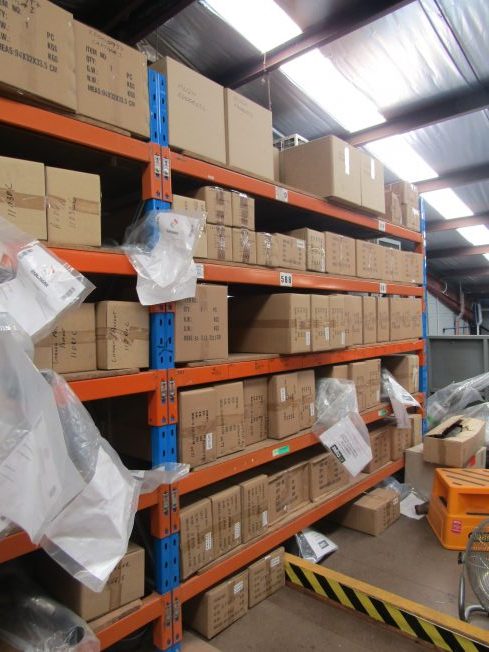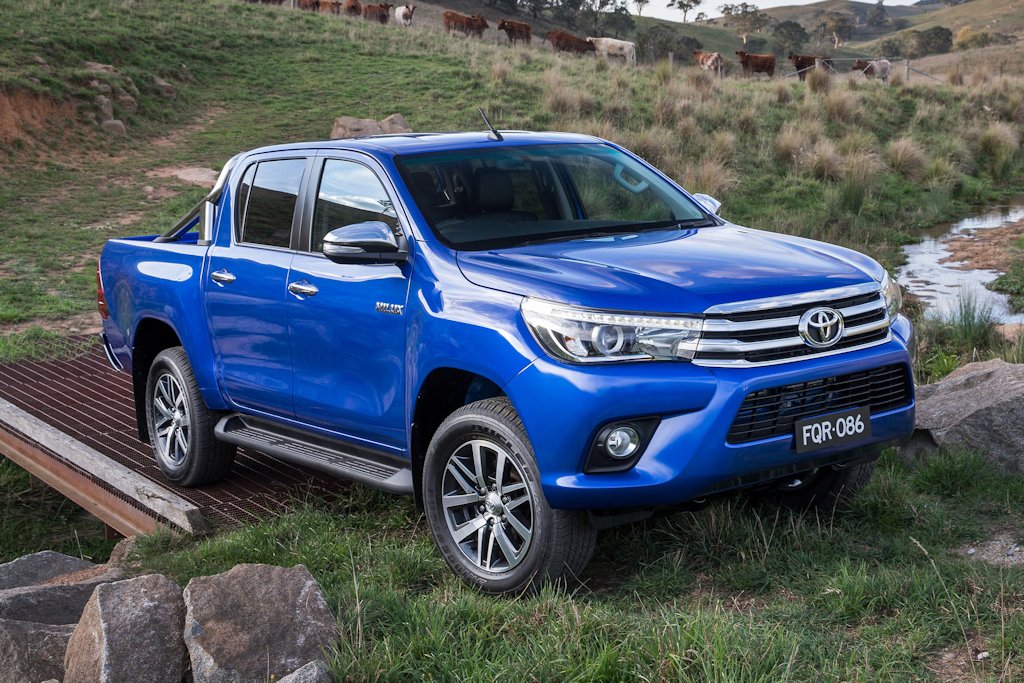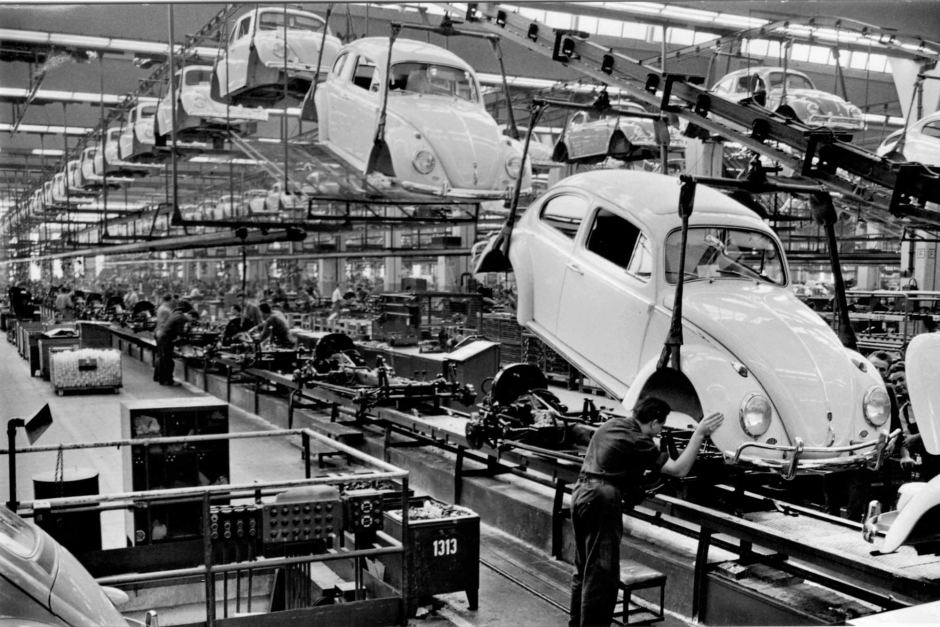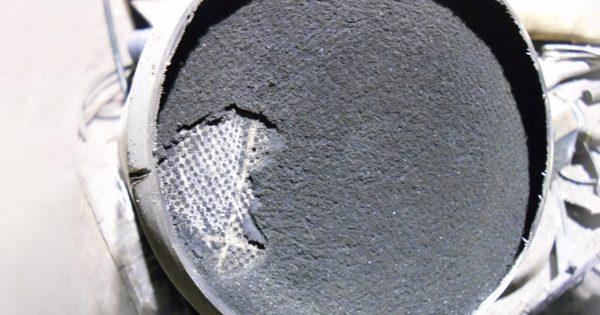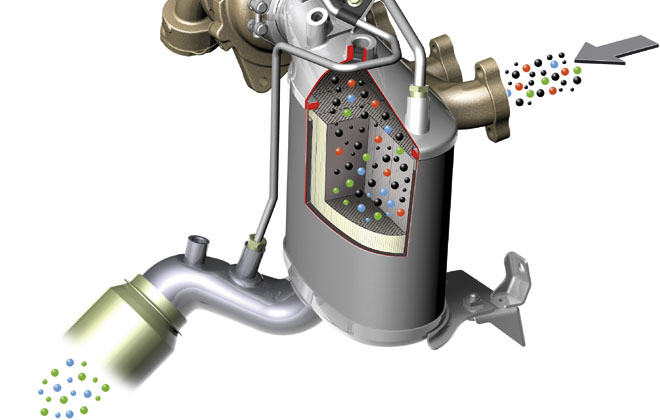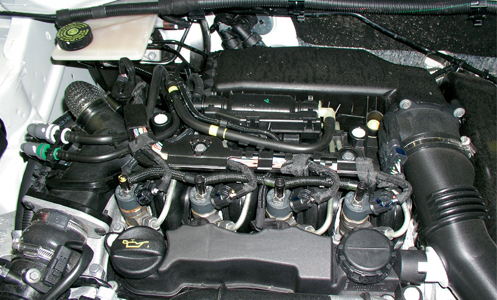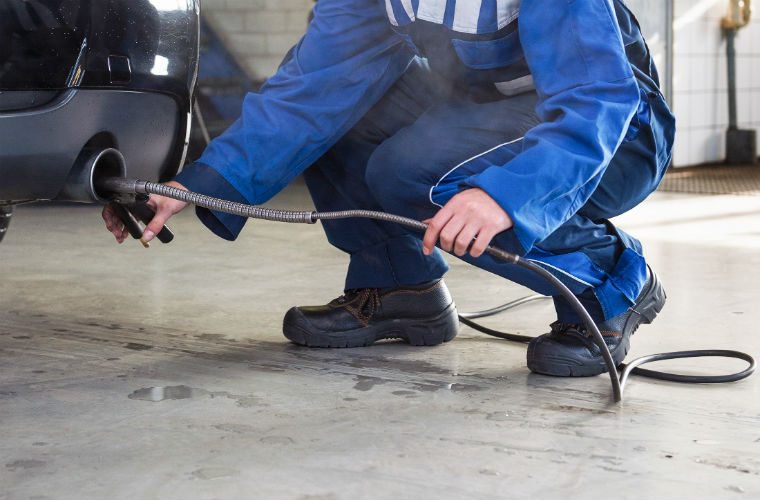Afterpay is the leading buy now pay later service that lets you get what you need now, and pay it in four instalments always interest-free. If you are struggling to pay for a DPF in our current economic situation, please talk to us now.
German Cars Love German Parts
Since 1919, ERNST Abgastecnoligie, German aftermarket exhaust manufacturers have been appreciated the world over by technicians and for quality and fit. German car driving enthusiasts tell us “ It’s the best or nothing.” ERNST are typically German in their fastidious approach to DPF manufacture and replacement procedures.
Ernst’s recommended steps before DPF replacement:
Strictly observe the repair guides and instructions of the manufacturer. Before and after replacing the diesel particle filter, read the fault memory and document fault reports. If specified test steps are not followed and occurring faults not eliminated, the newly installed DPF may become clogged after 50 – 100 km, and no longer capable of regeneration. DPFs are not suitable for vehicles with performance upgrades (e.g. chiptuning).
- Retrieve and record ash content (often displayed in %)
- Retrieve and record soot content (often displayed in mg)
- Check function of differential pressure sensor (< 50 mbar is usually OK during idle)
- Check mass air flow sensor
- Check EGR valve
- Check vacuum lines for leaks and check condition of the lines to the differential pressure sensor, (Including using a vacuum pump if necessary)
- Check temperature sensor upstream and downstream of DPF, as well as turbocharger
- Examine upstream oxidation catalytic converter
- Check glow plugs and control module (particularly BMWs)
- Check engine coolant thermostat and, if necessary, EGR thermostat
- Check injection nozzles
- Check charge air hose pressure (overpressure test)
- Check boost pressure sensor
- Actuator test, intake pipe flap (BMW swirl flaps)
- Check intake/intercooler pipes and hoses for leaks – intake manifold for residues
- Where fitted check Eolys DPF additive system for correct function, check fill level
Download the Ernst replacement DPF checklist
DPF Australia is your ERNST Distributor; delivering reasonably priced, exceptional quality and service, technical and after sales assistance. No one knows more about DPFs. Call Charles Anderson – 1300 821 877 email – enquiries@dpfsales.com.au or visit us at www.dpfsales.com.au
Moving on up at DPF Sales Australia
Growing larger is a nice problem for DPF Sales Australia.
DPF SALES AUSTRALIA are pleased to announce the relocation of their National Head Office this week to: Unit 39 / 15 Valediction Road, Kings Park NSW 2148.
The move is expected to be completed by Sunday November 10th. Phone numbers and emails will be the same, but with more storage space, a wider range under roof, and ultimately even better customer service as more diesel particulate filters for cars and commercials can be ranged.
MORE PARTS, MORE STORAGE !
Managing Director Charles Anderson, said that ever-increasing sales numbers meant the company needed more warehouse area and a larger and more efficient dispatch space. ” We’ve got great commercial neighbours here, and I’m just minutes from home. Getting a larger office, meeting and storage space has been a really positive shot in the arm for all of us. Growth is a nice problem to have. ”
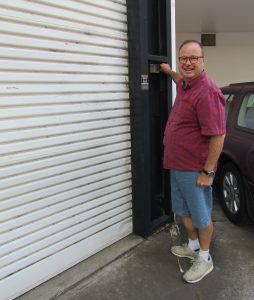
https://www.dpfaustralia.com.au/ Australia’s Favourite DPF Supplier, widest range, best quality, well priced Diesel Particulate Filters! | 1300 821677 | enquiries@dpfsales.com.au
Toyota faces class action over Hilux DPF
A CLASS ACTION AGAINST AUSTRALIA BEST-SELLING CAR has been filed in the Federal Court, over issues with the diesel particulate filter in June 2015-18 Toyota HiLux, Prado and Fortuner models fitted with a 2.8-litre turbo-diesel engine. Originally announced in December, the lawsuit could involve more than 250,000 vehicles.The case against Toyota Australia alleges the diesel particulate filter fitted to the 2.8-litre turbo-diesel four-cylinder HiLux, Prado and Fortuner is defective.
A diesel particulate filter (DPF) is fitted between the engine and exhaust to collect soot and dangerous particles from diesel vehicles. When the engine reaches a certain temperature, the contents of the filter are burnt off in a process known as regeneration.
DPF Australia was founded to fill the demand for a more realistically priced range of replacement Diesel Particulate Filters and associated diesel products and to support the Australian motor trade with technical support and education about DPFs their systems.
An Australian based company with extensive technical knowledge, DPFs Australia believe that we offer you a quality product and great service at a price which is significantly lower than OE DPFs. The key to DPF Australia is their significant range of stock on the ground in Australia and the ability to ship economically and generally overnight, by TNT Road Express.
According to the lawsuit, the DPFs don’t burn off particulate matter in regular urban driving – where many owners spend the majority of their time – creating a buildup of particulate matter, DPF blockages, foul-smelling emissions from the exhaust, poor fuel economy and greater wear and tear on the engine.
“The Affected Vehicles have an in-built regeneration system designed to initiate regenerations periodically,” Bannister Law says in its filing.
“This regeneration system fails, or has a propensity to fail, to prevent the DPF from becoming partially or completely blocked. This, in turn, causes the Affected Vehicles to experience a myriad [sic] of other issues, including decreased power, increased fuel consumption and the emission of excessive white smoke and diesel particulate matter into the atmosphere.
“The Affected Vehicles experiencing these issues require time consuming and costly repairs, including repeated vehicle servicing and repeated replacement of the DPF in its entirety.”
Toyota Australia began calling owners of the affected vehicles back to the dealership for a free fix in October 2018, which involved an update to the engine software, the introduction of a DPF custom mode, and a manual inspection of the DPF for built-up particulate matter.
The company also started fitting a manual regeneration button to the HiLux, Prado and Fortuner in the middle of 2018.
Toyota Australia didn’t offer comment on the matter, with a spokesperson issuing the following statement:
“Toyota Australia is unable to comment as this matter is before the courts. We encourage any Toyota owners with questions or concerns about their DPF to contact their closest/preferred Toyota Dealer or the Guest Experience Centre on 1800 869 682 (Monday to Friday 8.30am to 5.30pm AEST).”
Toyota’s HiLux ute is Australia’s best-selling car to date in 2019, and has topped the sales charts for three years running.
With thanks, Scott Collie, caradvice.com.au
VW’s last Beetle rolls off factory floor this week
Volkswagen is bringing an end to its much-loved Beetle car this week at its plant in Puebla, Mexico.
In total, over 21 million original Volkswagen Beetles were produced in its lifetime.
• Volkswagen’s Beetle was conceived by the Nazis in 1938
• Production of the car under Nazi rule never happened, but restarted with the British
• The marque produced over 21 million versions, and was embraced around the world
It’s the end of the road for a vehicle that has symbolised many things over a history spanning the eight decades since 1938.
Initially birthed as a project of Germany’s Third Reich, it then became a symbol of Germany’s post-war economic renaissance and rising middle-class prosperity. Adolf Hitler wanted the Beetle to make motoring available to the German masses.
It also stands as an example of automotive globalisation, sold and recognised all over the world alongside peers spanning a similar lifespan from the post-war period, such as the Citroen 2CV or Land Rover Defender.
DPF Sales Australia are your best quality, most cost-effective supplier of a replacement Diesel Particulate Filter for your Volkswagen Crafter, Amarok, Transporter, Toureg, , Audi, Skoda Octavia, and Porsche.
Call: 1300 821677 | Email: enquiries@dpfsales.com.au
Today, the Beetle stands as a formidable piece of 20th-century design — about as recognisable as a Coca Cola bottle.
The car’s original design — a rounded silhouette with seating for four or five, nearly vertical windshield and the air-cooled engine in the rear — can be traced back to Austrian engineer Ferdinand Porsche, the founder and namesake of fellow German marque, Porsche.
He was commissioned by Nazi Germany’s Adolf Hitler to create a “people’s car” that would make motoring widespread among the German people, which was then known as the KdF-Wagen — the acronym of the Nazi labour organisation, Kraft durch Freude (Strength through Joy) — under whose auspices the car was to be sold.
Preparation for the vehicle even involved creating a purpose-built factory town, which was then known as the City of the KdF car at Fallersleben. Aspects of the car bore similarities to the Tatra T97, made in Czechoslovakia in 1937, and to sketches by Hungarian engineer Bela Barenyi published in 1934.
But due to World War II, production of the Beetle never happened. Instead, the factory switched to military vehicle production, using forced labour sourced from occupied Europe. Liberated by US troops in April 1945, the factory town was renamed Wolfsburg a month later.
By June of that year, control of the factory was turned to Britain, which at the time boasted a considerable automotive industry, and ordered 22,000 Volkswagens from the factory in August.
But not all Brits were immediately on the side of the Beetle, with automotive baron Sir William Rootes telling a meeting of the country’s leading car manufacturers the vehicle would be “quite unattractive to the average motorcar buyer”.
By the end of 1949, the Volkswagen factory had produced over 45,000
vehicles, and had transferred ownership over to the West German
government and the state of Lower Saxony, which still owns part of the
company.
By 1955, the one millionth Beetle, officially called the Type 1, had left the assembly line.
German people’s car synonymous with coastal California
During the 1960s the Beetle, or the ‘bug’ went on to become a symbol of counterculture in the United States.
The United States became Volkswagen’s most important foreign market,
peaking at 563,522 cars in 1968, or 40 per cent of total production.
This was aided in part by sometimes humorous advertising from agency Doyle Dane Bernbach that urged US car buyers to “Think small” from 1959. The Beetle was seen as an antidote to the big brash American cars of the post-war period.
It went on to become the biggest-selling foreign-made car in the US throughout the 1960s, and cameoed in many of the America’s significant social and cultural moments in that decade.
Bernhard Rieger, author and historian of the Beetle, wrote in his 2013 book that the vehicle’s humble German characteristics were precisely what made it stand out against bravado of American cars in that period.
“Unlike in West Germany, where its low price, quality and durability stood for a new post-war normality, in the United States the Beetle’s characteristics lent it a profoundly unconventional air in a car culture dominated by size and showmanship,” Mr Rieger wrote.
Throughout the 1960s, the car would become a symbol of America’s counter-cultural revolution, known as the hippie movement, which reverberated from California to the world, preaching a doctrine of pacifism, environmentalism, artistic expression, and an openness to the use of recreational drugs.
By the end of the decade, the Beetle would become a star of Hollywood, where an anthropomorphised racing-variant of the car — known as Herbie — featured as the main character in a series of Disney-produced films starting with The Love Bug in 1968. Herbie would go on to cameo in another five films between 1968 to 2005. The car was popularised in film by Disney throughout the late 20th-century.
Beetle spearheaded car industry’s retro turn
In a company document outlining the history of the vehicle from 2003, Volkswagen said the Beetle “helped to influence the streets everywhere around the world”.
From 1998–2011, the company produced the New Beetle, a contemporary version of the vehicle that was based on the platform of the Volkswagen Golf.
That saw the company resurrected some of the original Beetle’s spirit in 1998 under CEO Ferdinand Piech, Ferdinand Porsche’s grandson.
In 2012, the New Beetle evolved into the Beetle A5, which involved a subtle redesign and the switch to the company’s Jetta platform.
A number of retro auto resurrections followed the revival of the Beetle, which included BMW’s iteration of the Mini Cooper in 2001 and the Fiat’s relaunch of the 500 in 2007.
Both the Mini and the 500 remain in production, while the production of an all-electric Mini will happen later this year.
Volkswagen — a company that is still reeling from a scandal that
involved widespread cheating on diesel emissions tests — said it would
not electrify the Beetle, despite current plans to introduce a raft of
other electric vehicles.
Sales of the contemporary Beetles have never matched the output of its
original, where over 21.5 million units of the original Beetle were
produced its lifetime.
About 500,000 contemporary Beetles have sold globally since 1998.
The final batch of over Volkswagen’s A5 Beetles will roll off the factory line in Mexico this week, with the last of them produced headed to a museum after factory celebrations.
With thanks, and photo credits – ABC News
DPF Sales Australia are your best quality, most cost-effective supplier of a replacement Diesel Particulate Filter for your Volkswagen Crafter, Amarok, Transporter, Toureg, , Audi, Skoda Octavia, and Porsche.
What causes DPF failure?
Unfortunately, despite their benefits, DPF’s do fail and many diesel car owners do not realise they may be helping to contribute, by not doing enough kilometres and driving too frequently in city areas.
It is hard to predict when a DPF will fail, because some manufacturers have had to replace some in the first 3 years and some never.
There are two main types of failure, blocking and melting.
The most common reasons for DPF blockages are: Short journeys where the engine doesn’t reach optimum operating temperature; Clogged EGR Valve increasing diesel soot passed to the DPF; Faulty fuel injectors sending too much fuel to the air/fuel mixture; Incorrect engine oil upon servicing the car ; Turbocharger failure with oil dripping into the DPF; and also, a High mileage vehicle will find regeneration harder .
The most common reasons for DPF failures are:
Short journeys where the engine doesn’t reach optimum operating temperature
Blown, loose or split inter-cooler hoses or pipes
Clogged EGR Valve increasing diesel soot passed to the DPF
Leaky or blocked pressure differential hoses or pipes or faulty pressure switch
Faulty fuel injectors sending too much fuel to the air/fuel mixture
Incorrect engine oil upon servicing the car – (Low Ash + Low Sulphur required for DPF Cars)
Turbocharger failure with oil dripping into the DPF
High mileage vehicle will find regeneration harder
Symptoms of a Blocked DPF Filter
As the majority of DPF’s are installed on newer cars, you will more than likely have a trip computer. Error codes such as the DPF light or EML (Engine Management Light) will be the first symptoms of a failing DPF….
Followed by some or all of these symptoms:
Loss of power
Reduced fuel economy
Poor throttle response
Harder or failure to start
Limp mode (most likely)
Bad smells
However, sometimes these warning lights can be false alarms and you should try clearing the fault:
1). Take the car for a drive on the freeway at the speed limit and drop down a gear or two to bring engine revs up to 2500. Hold for 20-30 minutes. This will assist the car to do a passive regeneration.
The main reason DPF’s get blocked is short trips and city driving.
Drive Faster. If you are driving slowly everywhere in your large diesel, the DPF will become blocked. Increase your speed and plant your foot to floor to when accelerating to increase exhaust temperature and clear soot levels.
Increase Your RPM. If the DPF light is on, your best bet is to drive at high RPM’s for a prolonged period until the warning lights turn off. This will increase the gases going through the DPF, thus clearing it and increasing the temperature.
Avoid City Centres. If possible, you should avoid slow traffic where possible, especially if you are nearing your DPF limit or have the light currently on.
Use High Quality Fuel. Premium fuels or diesel fuel cleaners include fuel additives that help burn off harmful particles.If you are currently in limp mode, driving at high RPM (step 2) will be your best chance of getting out of limp mode. Once you have normal power, go for a long fast drive on high quality fuel. If the issue remains the next day, get your error codes read by a diagnostic tool.
2). Using a OBD2 diagnostic tool, with suitable DPF regen function, to initiate a forced regeneration. During this the car will sit there for maybe up to 45 minutes and hopefully burn any soot down to ash. If the warning light continue to display, you will notice the following
DPF Australia fills the demand for more realistically priced Diesel Particulate Filters and associated diesel products, and supports the Australian motor trade with technical support.
An Australian based company with extensive technical knowledge, DPF Australia offer you a quality product and great service at a price which is significantly lower than OE DPFs, and a great range of stock right here in Australia.
See https://www.dpfaustralia.com.au/product-category/choose-your-vehicle/
Call: 1300 896 505
Email: enquiries@dpfsales.com.au
What does a DPF do for your diesel engine ?
The Diesel Particulate Filter traps the harmful diesel gases that gets cleaned regularly by a process called DPF regeneration. Emissions from diesel cars are a concern worldwide. The collected diesel soot particles are burnt off at high temperatures, which results in an “ash-like” after product. After the regenerating of the DPF, it can now restart the cycle of collecting harmful exhaust gases again.
There are 3 different types of DPF regeneration, which are active, passive and forced.
Active DPF Regeneration reads the back pressure of the exhaust or soot load of the filter to determine when to begin the regeneration. Once initiated, the timing of the fuel injection will alter that will result in the exhaust temperature increasing to burn the soot particles. During an active DPF regeneration, you may notice the following:
Higher idle RPM/Speed
Cooling fan working harder
Poor fuel economy
Smells from exhaust
Engine note change
Passive DPF Regeneration
Passive will take place once the exhaust reaches optimum temperatures where the regeneration will automatically begin. The exhaust will reach these temperatures will occur mostly on prolonged highway driving. Manufacturers that use a passive form of regeneration typically install a oxidizing catalytic converter near the engine to increase the temperature.
Forced DPF Regeneration
Forced is where the Active regeneration could not occur that has resulted in the soot levels reaching 70% and above. The diesel car will enter limp mode and will require a diagnostic tool to force the regeneration. It’s important that this is done as soon as possible because once the car reaches 85% soot level, the DPF will need to be removed and cleaned.
DPF Sales Australia’s management have nearly 35 years experience in the automotive industry and has been founded for the distribution of DPFs and associated products.
DPF Australia offer you a quality product and great service at a price which is significantly lower than OE DPFs, and a great range of stock right here in Australia. See https://www.dpfaustralia.com.au/product-category/choose-your-vehicle/ | CALL 1300 896 505 | email charlesa@dpfsales.com.au
Health Issues with Common Rail diesels ?
With your common-rail diesel, you may experience Smoke; Power loss; Rough idle; Engine rattle; Dirty diesel engine oil; Oil use; EGR valve problems, and inlet system deposits.
Diesel fuel quality is important, so avoid the cheap stuff, and avoid using truck diesel in light common rail engines.
Operating conditions… If you do a lot of short runs, excessive idling, cool operating, light engine loadings, this will contribute to deposit problems in your combustion chamber, exhaust spaces, turbocharger, and diesel particulate filter.
Common rail injection systems are very high pressure and high temperature… sufficient to degrade the fuel, leaving deposits in your pumps and injectors, and lowering your fuel’s lubricating ability. Your fuel filter going black is a sign of this happening.
Sticking fuel injectors…
Your fuel injectors then stick and allow excess fuel which also results in engine rattles, carboning up of your EGR valves, turbochargers, DP filters, combustion chambers and more.
Piston ring deposits also form, which allows compression blow by pressure into your sump, and heavy soot contamination of your oil. This pressure is released via your crankcase ventilation system into your air intake system. This carries an oil mist which mixes with exhaust soot from your EGR valve, fouling your throttle body and choking up your intake manifold.
With thanks, Cost Effective Maintenance.
DPF Australia fills the demand for more realistically priced Diesel Particulate Filters and associated diesel products, and supports the Australian motor trade with technical support.
An Australian based company with extensive technical knowledge, DPF Australia offer you a quality product and great service at a price which is significantly lower than OE DPFs, and a great range of stock right here in Australia. See https://www.dpfaustralia.com.au/product-category/choose-your-vehicle/ | CALL 1300 896 505 | email charlesa@dpfsales.com.au
4 Good Reasons not to tamper with your DPF
Whilst Diesel Particulate Filter ( DPF) legislation may seem onerous, apart from less pollution, here are four very good reasons not to tamper with or remove your DPF.
1. It is illegal to remove or a PDF. It is illegal to tamper with the vehicle design, and voids Vehicle Insurance. Australian Design Regulations are contravened when you change the vehicle from the tested and approved designn NSW, individual fines are up to $11,000 and company vehicle fines up to $22,000 and the EPA are implementing similiar legislation across Australia. In NSW they are preparing legislation enabling active and retrospective prosecution of repairers who remove a DPF from a diesel vehicle. Roadside Inspections are starting and will pick up PDF removal or tampering. Additionally when it comes to selling your diesel, if your buyer wants a Roadworthy Certificate, you will find it will have to be put back to correct design, or it may not be able to be sold.
2. The vehicle may not run well. Without the DPF, a diesel vehicle’s ECU will not receive the correct sensor information relating to minimum and maximum allowable back pressures, which will result in error codes and probably the vehicle running in “limp” mode. Most “DPF Delete” businesses reprogramme the ECU or trick the sensors using modules, which can be costly. We often have customers report that their vehicle has never run properly since the DPF was removed or adjusted.
3. Diesel Particulate Matter (soot) can cause lung cancer. Older diesels are bad but Common Rail diesels are worse because of the tiny partical size that can be so small that the lungs lining can’t block the entry of soot particles into the lung tissue or the blood stream.
4. Insurance policy voided. If the vehicles emission systems are tampered with or removed then the car is considered by every state authority to be unroadworthy. The fine print on your car’s insurance will state that the policy is void.
If you have any queries or concerns please call us at Call: 1300 821677 |
or Email: enquiries@dpfsales.com.au
Assessing a DPF Issue
Initial Assessment of a DPF Issue
A couple of questions to the driver and a quick walk around the vehicle can tell a lot about the likely condition of the DPF;
What are the symptoms?
Eg: loss of power, DPF or engine light on
How many kilometres?
Typically a DPF in ideal driving conditions should reach a minimum of 200,000K before filling with ash and needing replacement
Anything much less than this usually indicates either some mechanical issue, poor driving conditions or poor servicing.
Short or long trip driving style?
If the vehicles coolant, oil and exhaust temp do not reach operating temp due to short trips the regeneration will not be able to start or will start but fail. The DPF will fill with unburnt soot.
Any recent repairs? DPF, turbo or induction system related?
Often damage to the DPF has been caused by a recent breakdown that has since been repaired such as a blown turbo, sticking EGR or leaking injectors. Any one of these type of issues can lead to excessive amount of soot or even raw fuel or crankcase oil entering the DPF and causing damage.
How many K’s since?
Has it been a small issue over a long time or a sudden catastrophic failure?
It can be a gradual build up of soot due to for example a slight induction system leak.
Or in extreme cases of over-fuelling, raw fuel or crankcase oil can pour into the DPF effectively causing an out of control regeneration, overheating and melting of the ceramic core.
Is the inside of the tailpipe have a clear oily film or is it coated in dry black fluffy soot?
There should be no soot as the DPF is a soot filter
If clean then it is an indication that the DPF is structurally intact and probably blocked.
If sooty then it indicates a damaged filter core and means that serious overheating has occurred.
Normal regeneration takes place at approx. 600 degrees C
A Cordierite core can withstand 1200 degrees C
A Silicone Carbide (SiC) core is over 2700 degrees C
So when they melt things have got really hot!
No matter which DPF you need, DPF Sales Australia have your Silicone Carbide (SiC) core model, in stock and at the best prices !
Call: 1300 821677


